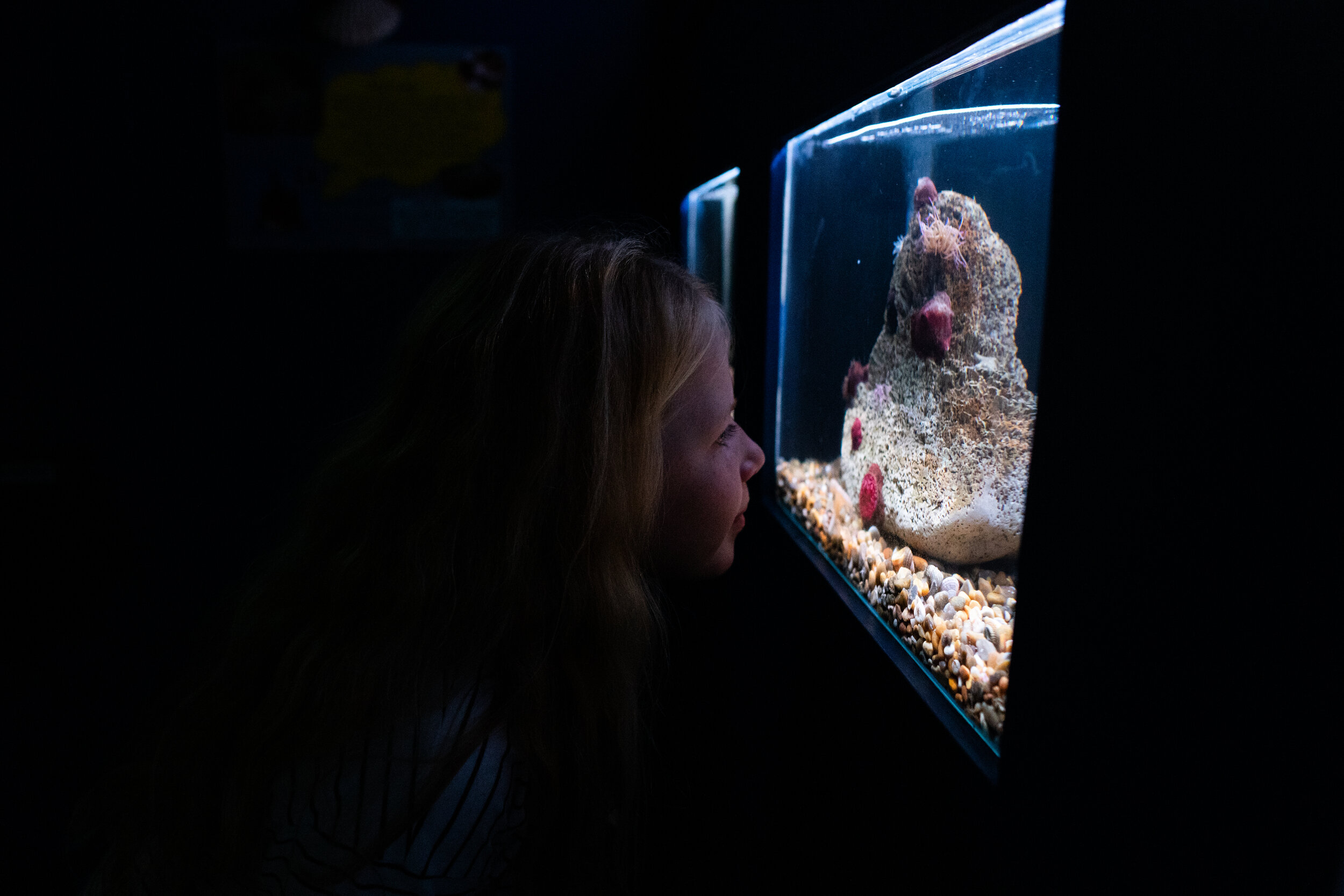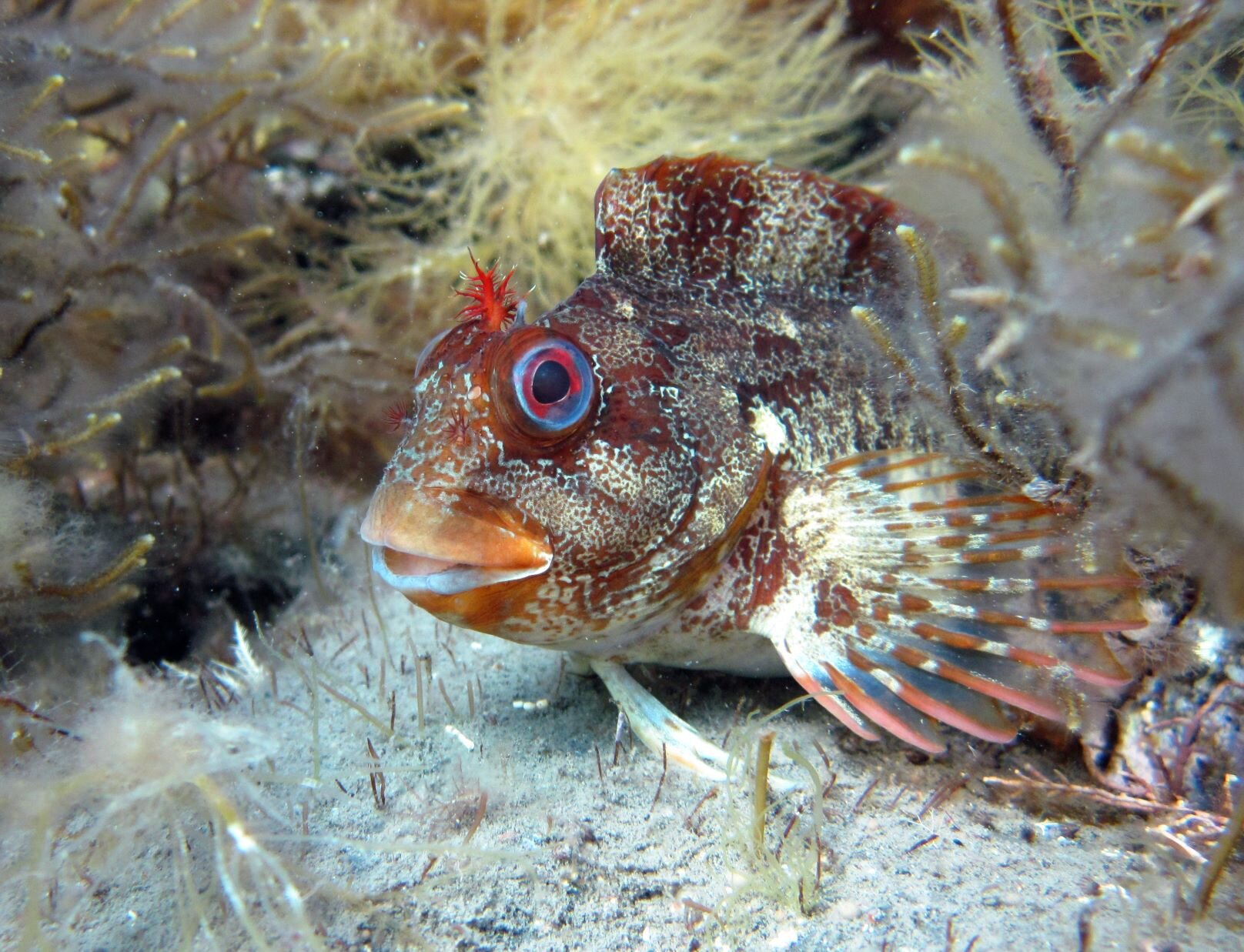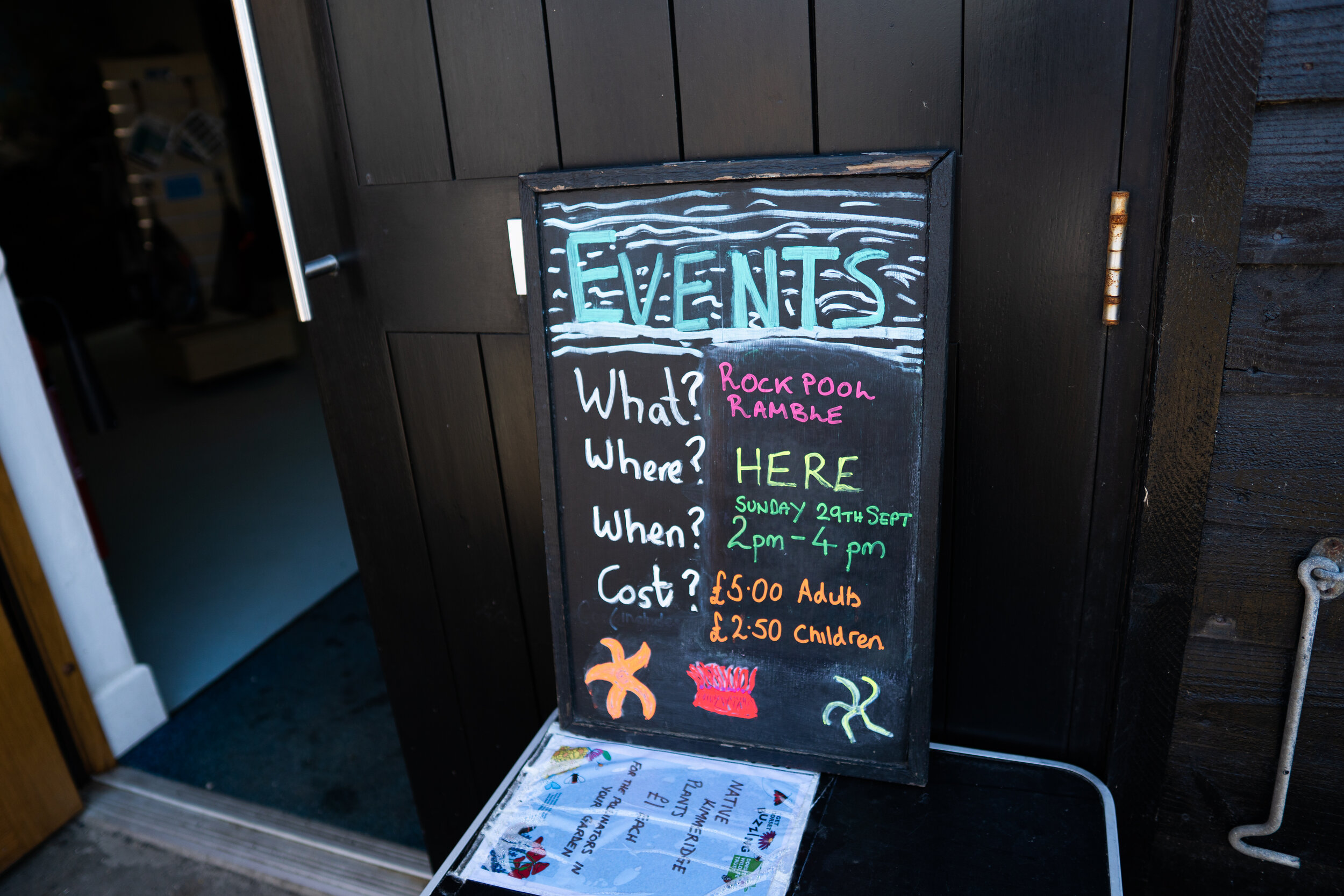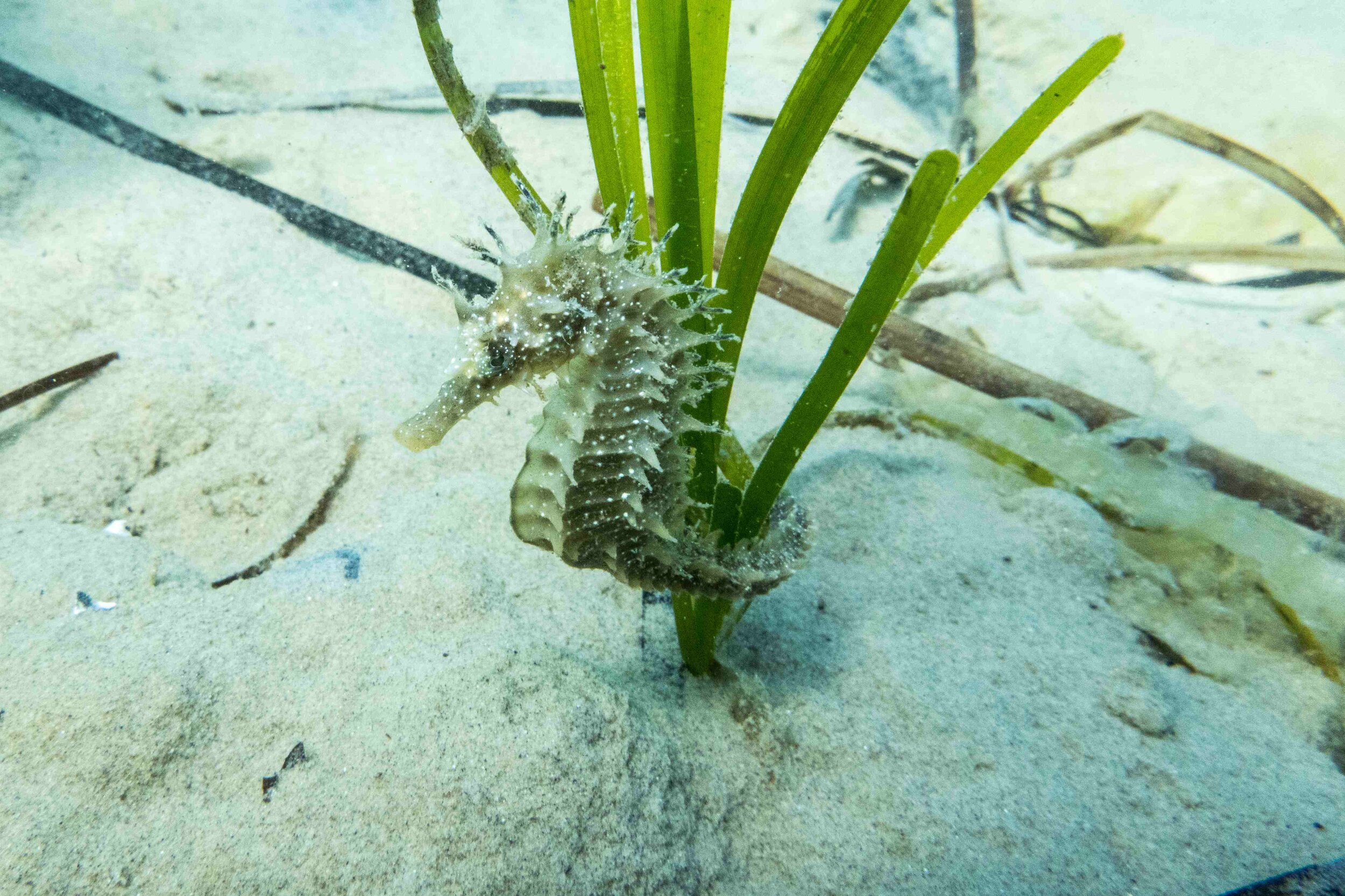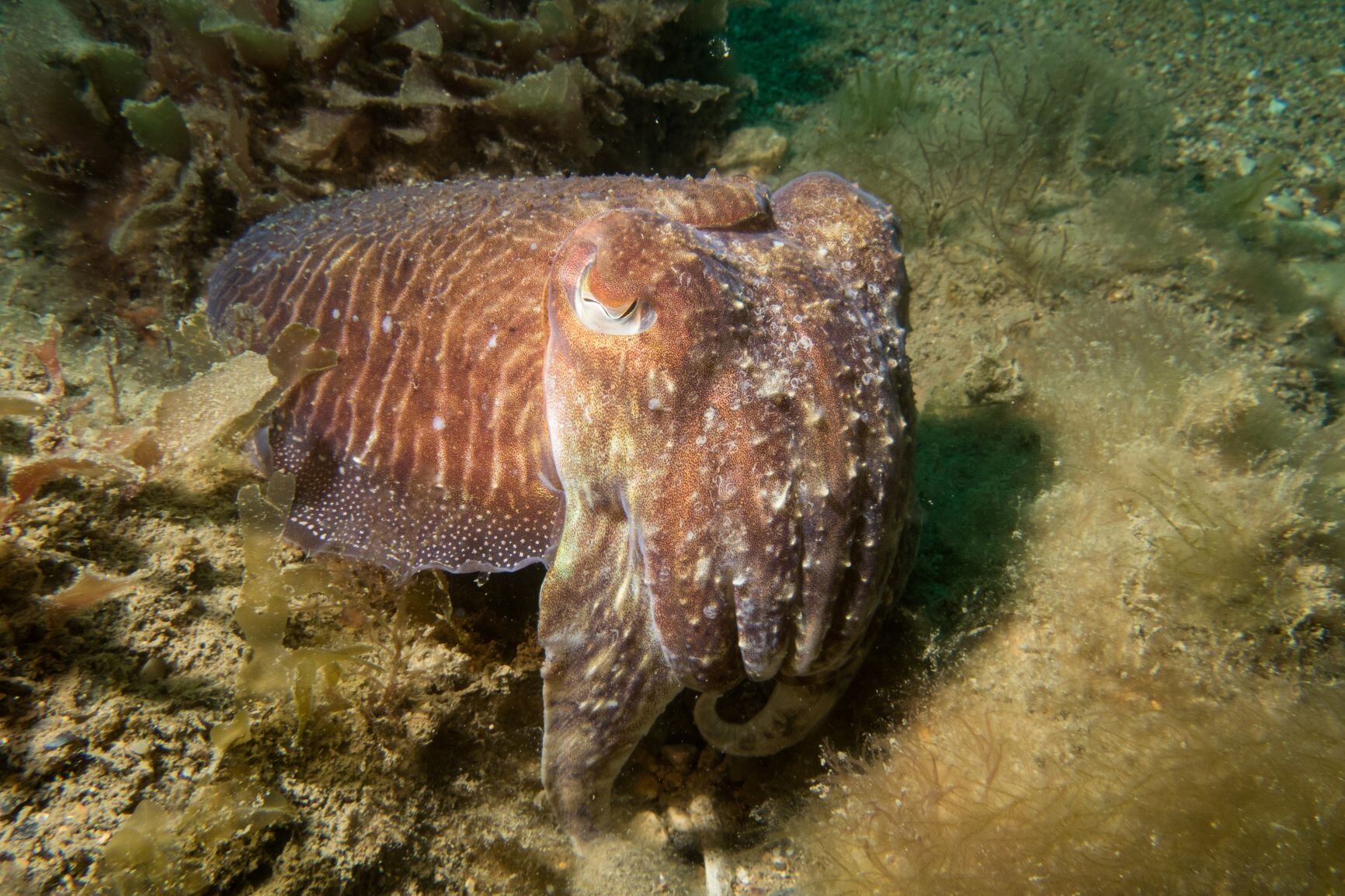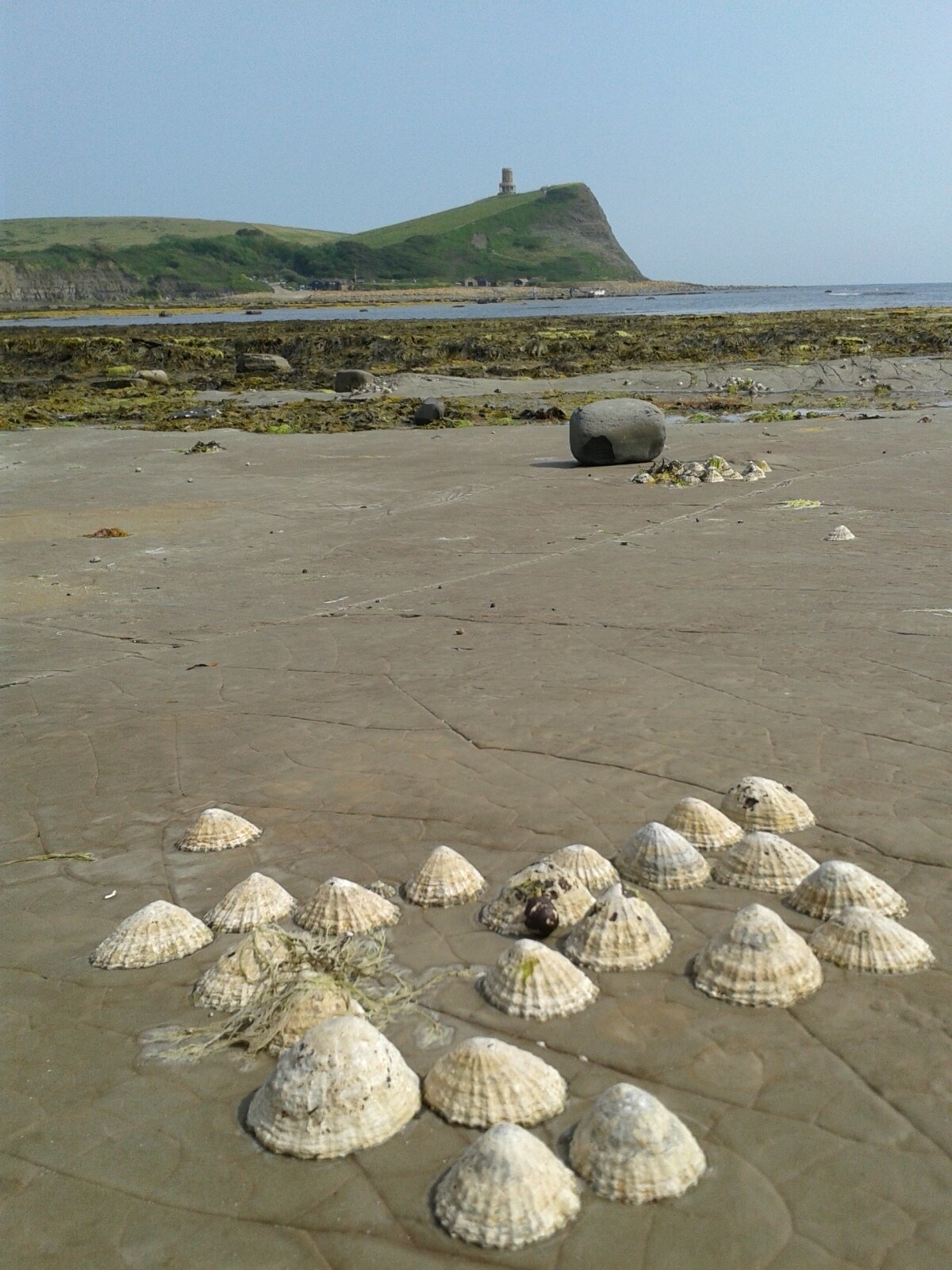Into The Industry: Manager at the Wild Seas Centre, Kimmeridge Bay
Elyssa Quinton
The UK’s rugged coastline and surrounding sea is home to a wealth of fascinating marine habitats and occupants, offering gin-clear and calm waters one day and then murky, turbulent waters the next! There are many surprises to be found for those who are willing to look; we have mysterious porbeagle sharks, pretty pollacks, clown-like blennies, magical cuttlefish and swimming scallops! Scratch travelling far and wide to see marine life, we have everything we love just on our doorstep. There are many fantastic organisations nestled along the UK coastline, aiming to educate, inspire, and showcase all that the UK seas have to offer to the general public, and The Wild Seas Centre at Kimmeridge Bay is a perfect example. In this blog we interview the centre manager Julie Hatcher, a key member of the Wild Seas Team, to share with us how the centre runs and what the main aims are of all the exciting projects they carry out.
Hey Julie! Could you tell us a bit about yourself and your position at the Wild Seas Centre in Kimmeridge Bay?
Hello! I am a marine biologist, scuba diver and have co-authored books on beachcombing, rockpooling and seahorses. I started as a volunteer for Dorset Wildlife Trust at Kimmeridge in 1996, going on to become the assistant marine warden and then manager of the Wild Seas Centre since 2004. As well as managing the day to day running of the centre, I also manage a team of volunteers and produce interpretation on the marine environment for Dorset Wildlife Trust.
Julie (far left) and her team outside the centre! Photo: Phil Abraham
When was the centre founded, and what has been the key stages of development within it? I understand it’s part of the Dorset Wildlife Trust now, has that always been the case?
Dorset Wildlife Trust employed a marine warden to engage with visiting school groups at Kimmeridge in 1979, going on to open the first visitor centre here (an old boat shed!) in 1980. The ‘hut’ as it was called, was replaced in 2001 by a purpose-built visitor centre with a dedicated school room and aquarium. A big refurbishment took place in 2018 resulting in the centre as it is today.
Can you explain the main aims the centre has and works towards on a daily, monthly and yearly basis?
The centre aims to enthuse and inspire visitors about the amazing and colourful marine wildlife that we have in the UK. We also work with various groups to promote codes of conduct to ensure their activity is kept to a minimum. The main code is the Seashore Code for people exploring the beach and rock-pooling to ensure no harm is done to the wildlife that lives there. Things like not removing creatures or seaweed from the rocks and returning everything to how it was once you have explored.
When it’s low tide a whole network of rockpools emerge enabling us all to have a glance at these intricate mini underwater worlds! Photo: Julie Hatcher
We have also used the centre to campaign for proper protection for our seas and were delighted when the Purbeck Coast Marine Conservation Zone (MCZ), which includes the seashore and seabed in Kimmeridge Bay, was designated earlier this year (2019). This MCZ is part of a network of protected areas all around the UK. Now that this area has been designated as a MCZ under UK law we will continue to win public support for it and ensure that it is well-managed for the benefit of the marine wildlife that it protects.
Wow, that is such an incredible achievement and hopefully more MCZs around the UK will follow. How much time do you spend and how do you go about public outreach (e.g. do you work with schools/social media/citizen science?)
The centre is an ideal base for visiting school groups, of which there are quite a few in the summer months. When they book a visit with us they get a chance to look around the centre and learn about the aquarium inhabitants, as well as taking part in an interactive learning session in our ‘Education Room’.
Then we take them out onto the seashore to find some of the animals they have been learning about. If conditions are suitable we do some ‘Snorkelling for Softies’ where they lie on the rock and put their faces in the water (complete with mask and snorkel) to get a crab’s-eye view of the rockpools. We always talk about the problem of marine litter and do a mini-beach clean with them.
The centre has all sorts of interactive resources to really engage with the visitors! Photo: Elyssa Quinton
1) The Wild Seas Centre has a mini aquarium full of UK species. Photo: Elyssa Quinton. 2) A Tompot Blenny is a common fish found in rock pools along the UK’s coastline - I just love their funky eyebrows! Photo: Julie Hatcher.
We also lead a programme of public events throughout the spring and summer months, including rockpool rambles, eco-friendly crabbing and other seashore activities. These activities include citizen science surveys like Crab Watch and Shore Search, and even the occasional Bio Blitz.
We are active on social media, through on Facebook at Dorset Wildlife, Twitter @DWTMarine and Instagram @dorsetwildlife.
Examples of the events that were displayed when I visited! Photos: Elyssa Quinton
Awesome, the public must love getting involved in collecting scientific data! Do you work with any external marine organisations or/and collect any data for them?
Yes we do, some of the organisations that we supply our data to include:
The Shark Trust – we send our mermaid’s purse data to them
Marinelife – data on live cetaceans and we partner with them to run training courses
Cetacean Strandings Investigation Programme – data on dead dolphin strandings
The Shore Thing project – annual, long-term monitoring of the seashore
Dorset Environmental Record Centre – all of our species data goes to them
If any of your readers would like to get involved in collecting marine data (its easy, fun and important for us to do), please follow the hyperlinks.
Your snorkel trails sound so much fun and I love how you are enticing more and more people to enjoy the beautiful ocean world that England offers. What species do you mostly see, and do you run them all year round?
We put out and manage a snorkel trail in Kimmeridge Bay in the summer months for people to use, and we produce a waterproof guide that people can take with them. We also hire out masks and snorkels. However we do not guide people in the water – it is just there for them to use if they want to and it is very popular. We are proud that we have inspired people to get in and have their first ever snorkel in the UK, coming face to face with a variety of creatures and admiring the colourful underwater garden. Seeing their enthusiasm when they have been on the trail is wonderful. It is an experience everyone should have!
The species commonly seen along the trail include corkwing wrasse, juvenile pollack, sand eels, a variety of crabs, snakelocks anemones, prawns, shannies and rock gobies… the list goes on. One of the most beautiful seaweeds is the rainbow wrack which forms bright blue bushes on the seabed, contrasting with the golden wireweed and pink coralline seaweed.
The snorkel trails run in Kimmeridge Bay are a fun and safe way to get the public into the water and seeing the underwater world for themselves! Photo: Julie Hatcher
I agree, seaweeds truly create a mystical environment with their magnificent colourations and secretions. I am intrigued to know that if you were given an endless amount of funding, what project would you like to start?
I am proud to have started several rewarding projects in Dorset, including the Dorset Seal Project recording both species of seal (harbour and grey seal) in the county. So far we have run it on a shoestring but there is so much more we could do if we had some funding. As well as recording the seals that live on or visit our coast, the aim is to get people involved in recording them and learning more about these enigmatic animals.
Having run various projects associated with the eelgrass meadows and seahorses at Studland Bay over the years, I would love to have funding to install eco-moorings there to protect the habitat from damaging chain moorings and anchors. The wildlife in the underwater meadows is so special that it should be protected and especially now the bay has been designated as a MCZ. Hopefully this is a project that can now be taken forward in future management of the site.
You really have achieved a lot - so thank you from all of us at The Marine Diaries! Now I am dying to know what are your top three favourite British marine creatures and why?
It is difficult to choose just 3 creatures, there are so many fabulous animals in UK waters. However I would have to include seahorses in there, having spent many hours underwater in Dorset observing them in their natural habitat. They are mesmerising to watch, it almost feels like you are watching a mythical creature like a unicorn! Their movement is slow and elegant.
Cuttlefish and octopus are another favourite as you get eye-contact and a sense of the intelligence of these animals. They communicate using their tentacles and their magical colour-changing ability to tell you how they are feeling and whether it is ok to approach or whether they just want to be left alone and given a bit of space.
I can’t make a list of my favourite British sea creatures without including the limpet. These under-valued molluscs are the key to a healthy and diverse rocky seashore. By feeding on the film of seaweed spores left by each tide, they control the amount of seaweed on the rocks. Too much seaweed limits the number of other creatures that settle there, but too little removes a vital shelter for many. On top of that they are sex-changing sea snails that can live for up to 17 years! Not bad for an overlooked snail.
1) Seahorses are a magical and intimate encounter if you are patient enough. There are a few areas in the UK that focus on the protection of Seahorses and their habitat- Seagrasses. 2) Cuttlefish are also my favourite UK marine animal! They change their colouration using specialised cells called leucophores and it’s simply mesmerising to watch. 3) Safety in numbers! Limpets muscle down hard to the rocks at low tide, but do infect travel far distances when grazing. Photos: Julie Hatcher
One last question… who are your greatest role models in ocean conservation at the moment?
I don’t really have any role models, but have huge respect for the scientists and conservationists who are working tirelessly around the world to highlight, research, and conserve the extraordinary marine life in our seas. We are learning fascinating new things about marine animals all the time, thanks to them.
Thanks so much for your time Julie, I thoroughly enjoyed speaking to you and learning about all the fantastic conservation work you and your team carry out and have achieved - keep up the amazing work!
If you would like to take a visit to the centre please drop in and support. Check their website here for details of how to get there, and opening hours (varies seasonally). If you can’t make it to Dorset, try and find a marine education centre near you as there are many dotted around all working towards a brighter future!




